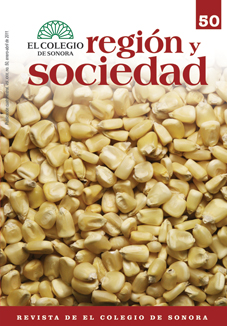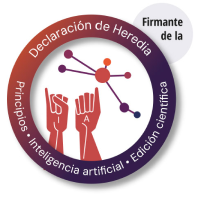Abstract
Over the past few years, various studies have shown that science, technology and innovation have emerged as development factors for countries and territories. In this context, the encouragement of interactive processes and learning which leads to innovation development; the private sector's incorporation of innovative practices in production processes; the public sector's provision of institutional and political support; and the importance of geographical proximity when promoting technological and innovative processes in a given country and region are all important aspects. This article analyses these factors and how they operate in the Los Lagos Region of Chile, including the participation of regional actors such as representatives from the private, public and technological sectors. Research results show that innovative practices are lacking in the region under study, in spite of institutional and political support. The study also reveals that the various actors do not perceive geographical proximity as a central means for developing innovations. Some recommendations are included in the conclusions with regard to future research and the implementation of public policies oriented towards technological and innovative development on a regional level.
References
Andersson, Martin y Charlie Karlsson. 2002. Regional Innovation Systems in Small & Medium–sized Regions. JIBS Working paper series no. 2002–2. Suecia.
Asheim, B.T., y P. Cooke. 1999. Local Learning and Interactive Innovation Networks in a Global Economy. En Making Connections: Technological Learning and Regional Economic Change, editado por E. Malecki y P. Oinas, 145–178. Aldershot: Ashgate.
Asheim, B., y A. Isaksen. 2000. Sistemas regionales de innovación. España: Universidad del País Vasco.
Boschma, R. 2005. Proximity and Innovation: A Critical Assessment. Regional Studies 39 (1): 61–74.
Buesa, M., M. Martínez, J. Heijs y T. Baumert. 2002. Los sistemas regionales de innovación en España. Una tipología basada en indicadores económicos e institucionales. Economía Industrial 347: 15–32.
Carlson, B., y R. Stankiewicz. 1991. On the Nature, Function and Composition of Technological Systems. Journal of Evolutionary Economics 1 (2): 93–118.
Cooke, E, y K. Morgan. 1998. The Asociational Economy. Firms, Regions, and Innovation. Oxford: Oxford University Press.
Cooke, P. 2003. Strategies for Regional Innovation Systems: Learning Transfer and Applications. Viena: United Nations Industrial Development Organization.
––––––––––. 2000. Sistemas de innovación regional: conceptos, análisis y topología. En Sistemas regionales de innovación, editado por Mikel Olazaran y M. Gómez, 45–61. España: Editorial Universidad del País Vasco.
Doloreux, D. 2004. Regional Innovation Systems in Canada: A Comparative Study. Regional Studies 38: 481–494.
––––––––––. 2002. What we should know about Regional Systems of Innovation. Technology in Society 24: 243–263.
Gelsing, L. 1992. Innovation and the Development of Industrial Networks. En National Systems of Innovation: Towards a Theory of Innovation and Interactive Learning, editado por B. A. Lundvall, 116–128. Londres: Francis Pinter.
Heijs. J. 2001. Sistemas nacionales y regionales de innovación y política tecnológica: una aproximación teórica. Documento de trabajo no. 24. Instituto de Análisis Industrial y Financiero. Universidad Complutense de Madrid.
Howells, J. R. L. 2002. Tacit Knowledge, Innovation and Economic Geography. Urban Studies 39: 871–884.
Jauhiainen, J., y K. Suor. 2008. Triple Helix in the Periphery: The Case of Multipolis in Northern Finland. Cambridge Journal of Regions, Economy and Society 1: 285–301.
Lambooy, J. 2005. Innovation, and Knowledge:Theory and Regional Policy. European Planning Studies 13: 1137–1152.
Lundvall, Bengt–Ake. 1992. User–producer Relationships, National System of Innovation and Internationalisation. En National System of Innovation Towards a Theory of Innovation and Interactive Learning, editado por ídem., 56–79. Londres: Francis Pinter.
Maskell, P, y A. Malmberg. 1999. The Competitiveness of Firms and Regions. 'Ubiquitification' and the Importance of Localized Learning. European Urban and Regional Studies 6: 9–25.
Méndez, R. 2006. Ciudades innovadoras y desarrollo territorial en regiones periféricas y áreas urbanas. En Una nueva cultura del territorio. Criterios sociales y ambientales en las políticas y el gobierno del territorio, coordinado por A. Tarroja y R. Camagni, 46–61. Colección Territorio y Gobierno. España: Visiones. Diputación de Barcelona.
––––––––––. 2002. Innovación y desarrollo territorial: algunos debates teóricos recientes. Revista Latinoamericana de Estudios Urbanos Regionales (EURE) 28 (84): 63–83.
Morgan, K. 1997. The Learning Región: Institutions, Innovation and Regional Renewal. Regional Studies 31: 491 –503.
Moulaert, E, y F. Sekia. 2003.Territorial Innovation Models: A Critical Survey. Regional Studies 37 (3): 289–302.
Nooteboom, B. 2000. Learning and Innovation in Organizadons and Economies. Oxford: Oxford University Press.
Parto, S., y David Doloreux. 2004. Regional Innovation Systems: A Critical Synthesis. Discussion Papers 17, United Nations University, Institute for New Technologies.
Rozga L., Ryszard. 2003. Sistemas regionales de innovación: antecedentes, origen y perspectivas. Revista Convergencia 33: 225–248.
Tödtling, R, y M. Trippl. 2005. One Size fits All? Towards a Differentiated Regional Innovation Policy Approach. Research Policy 34: 1203–1219.
Zientara, R 2008. Polish Regions in the Age of a Knowledge–based Economy. International Journal of Urban and Regional Research 32 (1): 60–85.
Open access policy
The authors who publish in región y sociedad accept the following conditions:
In accordance with the copyright laws, región y sociedad recognizes and respects the authors’ moral rights, as well as the ownership of property rights, which will be transferred to the journal to disseminate the articles in open access. región y sociedad does not charge the authors for submitting and processing articles for publication.
All the texts published by región y sociedad —with no exception— are distributed under a Creative Commons license 4.0 Attribution – Noncommercial (CC BY-NC 4.0 International), which allows third parties to use the publication as long as they mention the works’ authorship and the first publication in this journal.
The authors can enter into independent and additional contractual agreements for the nonexclusive distribution of the version of the article published in región y sociedad (for instance include it into an institutional repository or publish it in a book) as long as they clearly indicate that the work was published for the first time in región y sociedad.
For all the above, the author(s) must send the Letter of transfer of property rights of the first publication duly filled in and signed by the author(s). This letter can be sent by e-mail as a PDF to: region@colson.edu.mx




















